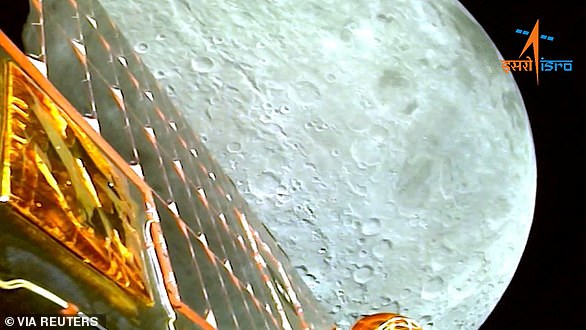India’s Chandrayaan-3 moon rover performs a pirouette on the moon’s south pole – as experts say it’s ‘like a child frolicking in the yard’
India’s adorable Chandrayaan-3 rover has shown its impressive mobility at the moon’s south pole, over 200,000 miles from Earth.
Color images posted by the Indian Space Agency (ISRO) show the four-wheeled device performing a 360-degree ‘pirouette’ as it searches for a new path to explore.
The clip was captured by a camera from the larger parent lander Chandrayaan-3, which carried the rover to the moon in its belly before releasing it last week.
The Indian space agency said the rover looks like “a child frolicking in the garden,” while its “mother” (the lander) looks on proudly.
Chandrayaan-3 has now been on the moon for nine days and has detected numerous elements in the dusty soil, including sulfur, silicon and oxygen.
The clip was captured by a camera on the larger Chandrayaan-3 parent lander, which carried the rover to the moon in its belly before releasing it not long after landing.
The Indian Space Agency, the Indian Space Research Organization or ISRO, posted on X (Twitter): “The rover was being rotated looking for a safe route. The rotation was captured by a Lander Imager Camera.
“It feels like a child is playfully frolicking in Chandamama’s courtyard, while the mother looks on lovingly.”
Chandamama means ‘moon uncle’ in Indian languages and is the name of a popular lullaby sung to children.
Chandrayaan-3 includes both a long-legged stationary lander (nicknamed ‘Vikram’) and a wheeled rover (‘Pragyan’), but both are equipped with scientific instruments to study the moon’s surface.
Another message from ISRO On Thursday, it was confirmed that the lander had just detected plasma in scarce quantities.
Plasma, often referred to as the fourth state of matter, is ionized gas that contains equal numbers of positive and negative charges.
“These quantitative measurements may help mitigate the noise that lunar plasma introduces into radio wave communications,” the space agency said.
“They could also contribute to improved designs for prospective lunar visitors.”
The rover has already detected sulfur in the soil of the southern lunar region, which an expert says could reveal more about the origin of our lunar neighbor.
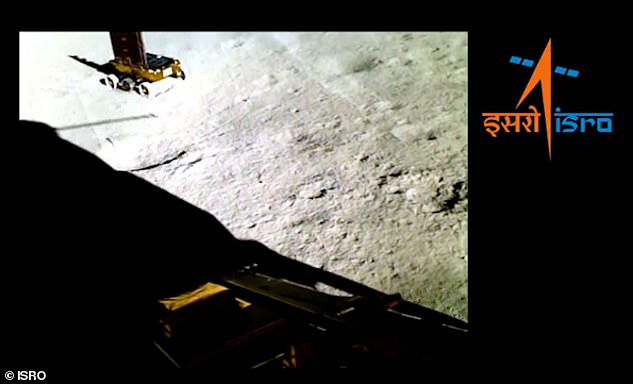
The Indian space agency, Indian Space Research Organization or ISRO, posted on X (Twitter): ‘The rover was being rotated in search of a safe route’

ISRO regularly tweeted updates on the progress of its Chandrayaan-3 spacecraft, which includes both a stationary lander and a wheeled rover.
It marks the first time sulfur has been found “in situ” in the south of the moon — so where it exists, rather than being detected from a distance by an orbiter, the country’s space agency said.
Sara Russell, professor of planetary sciences at London’s Natural History Museum, said the discovery has “really important implications” for researchers and astronauts alike.
“Sulfur is usually bound to important metals like iron and nickel, and these could be important ores that could be used by future astronauts to enable them to live and work on the moon,” she told MailOnline.
The Pragyan rover was launched to the moon in the Vikram lander on August 23 – what will undoubtedly prove to be one of the most celebrated days in Indian space history.
Just a day after landing at a relatively flat point between the Manzinus C and Simpelius N craters, the rover rolled out of its parent craft and began exploring.
Since then it has been sending back astonishing pictures of the southern lunar area, over 200,000 miles from Earth.
Earlier this week, it shared a stunning photo, taken by the Vikram parent land rover, in front of a rugged patch of lunar soil.
One image shows a 13-foot (4-meter) diameter crater right in front of the rover blocking the way, which would have caused the small device to topple over if it had fallen into it.
Fortunately, the rover was instructed to follow the trail and chart a new course.
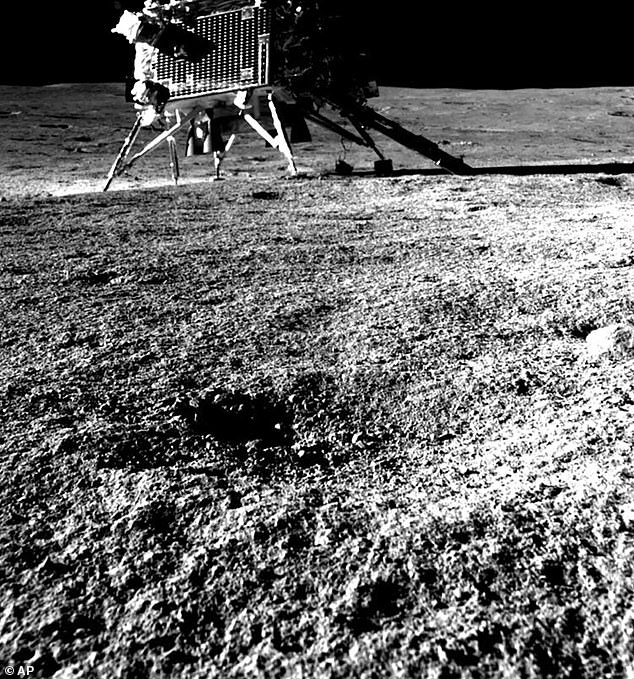
Beautiful: Indian Space Research Organization (ISRO) image taken by the Pragyan rover shows the Vikram lander. Photo released August 30, 2023
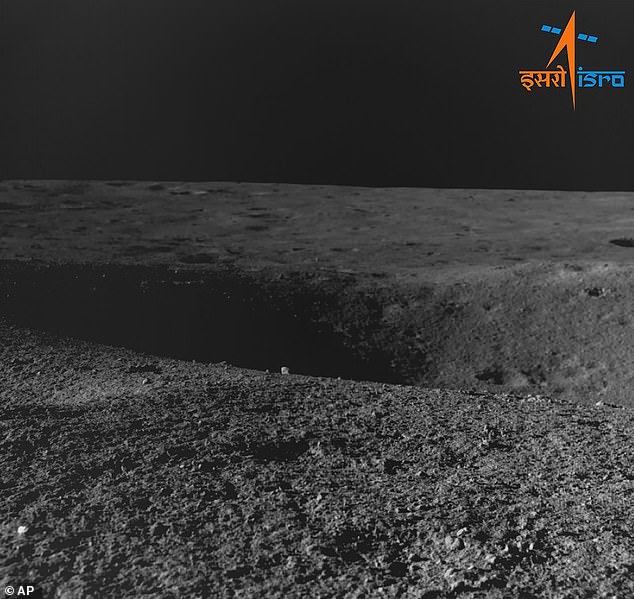
This image from the Indian Space Research Organization shows a crater encountered by Chandrayaan-3 as seen by the navigation camera
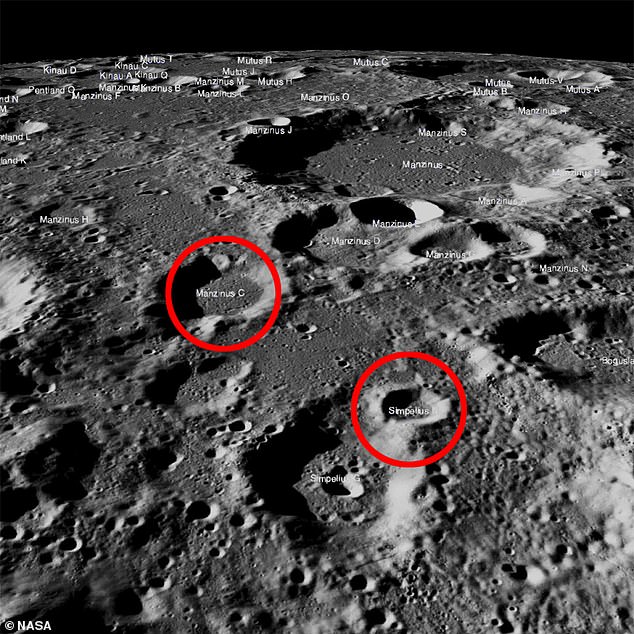
Chandrayaan-3 landed between the southern craters of Manzinus C and Simpelius N. Note the flatness of the region, compared to other nearby regions of the South Pole
For the past week, India has caught the world’s attention with its Chandrayaan-3 mission, but the mission is already about halfway.
Science instruments on both the lander and rover will only be active for a total of one Monday (14 Earth days) before losing power — a relatively short mission.
Once the time period is up, the rover and lander become idle on the moon and the mission ends.
While India is the fourth country to safely land a spacecraft on the moon after the US, Russia and China, it made history as the first country to do so at the south pole of the moon.
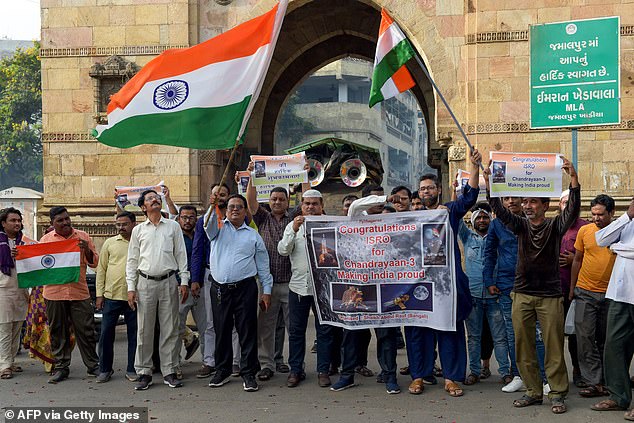
Chandrayaan-3 landed safely on the moon on August 23 – what will surely prove to be one of the most celebrated days in Indian space history. The photo shows the celebrations in the streets of Ahmedabad the day after
Russia attempted to land a spacecraft on the southern moon on Aug. 19, but failed spectacularly when it spiraled out of control and wrecked — leaving the way clear for India to seal the feat instead.
Chandrayaan-3 left Earth just over a month ago aboard a rocket from the Satish Dhawan Space Center north of Chennai on July 14.
It entered lunar orbit on August 5, and the lander (with the rover inside) detached from its propulsion module on August 17.
The Indian spacecraft took much longer to reach the moon than the Apollo missions, which arrived within days, because the Asian country uses much less powerful rockets.

